A History of Me
The Rail Track
Previous Next
The 1833 Journal of Agriculture states that "The part of the ground on which the rails were to be laid was first ballasted with hard materials, to prevent the sinking of the large stone-sleepers which were to be laid on it. The stone-sleepers were then laid, and placed so high as to support the rails quite clear of the ground. On all the hard parts of the ground stone-sleepers were laid at once, but on the spaces which had been filled up, wooden sleepers were first laid down, to give time to the travelled earth to subside. Upon each stone-sleeper was placed a cast-metal chair, 7 lb in weight. The chair is fastened to the sleeper with two iron pins driven into the wooden pegs, inserted into holes in the sleepers. The pegs are immersed in tar, and not too tightly fastened in the holes, in case that a concussion upon the chair should rend the sleeper. The chairs are placed three feet apart. The rails are made of the best malleable iron: they are 15 feet in length, 21/4 inches in breadth, and weigh 23 lb per lineal yard. At the junction of their ends, they overreach sideways in one chair, so that the waggon-wheel passes to the one rail before it leaves the other, which prevents their starting up from the chairs even 'should any of the keys drop out accidentally; and this contrivance also permits expansion and contraction of the length of the rails by the vicissitudes of the weather, without the risk of a space being left between the ends of the rails. The rails are tightly fastened to the chairs by means of double keys which are driven in in opposite directions, and they are place five feet wide, outside measure. The whole railway is a single road, but for conveniency of passage, there are two sidings in every mile of 30 yards long each."
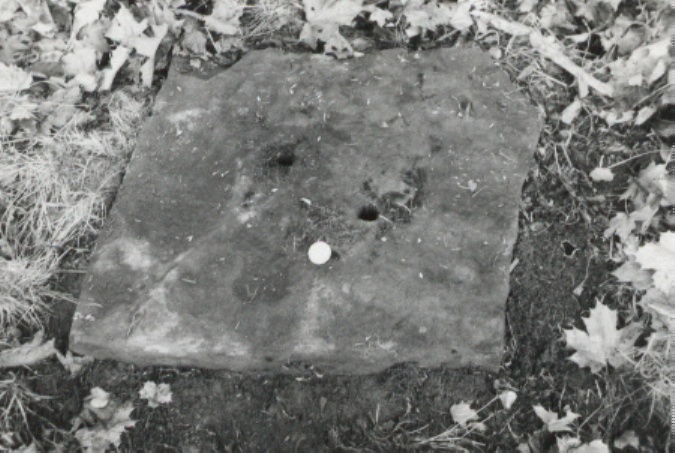 The only original stone sleeper I found (on the Newtyle/Glamis track) - that's a half crown I put on it for size comparison! Remember half crowns? |
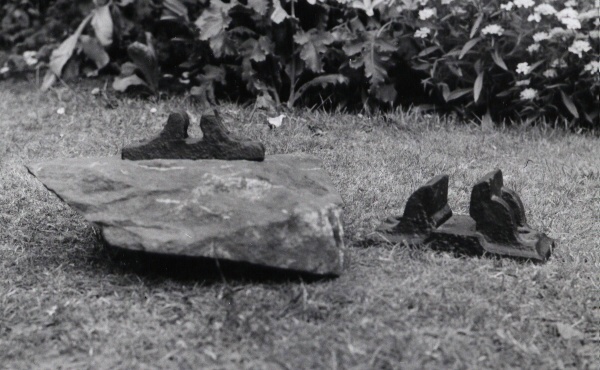 In the 1970s D Burnett found these cast iron chairs at Balbeuchly and the stone sleeper at Baldragon station where he noted a retaining wall made of them |
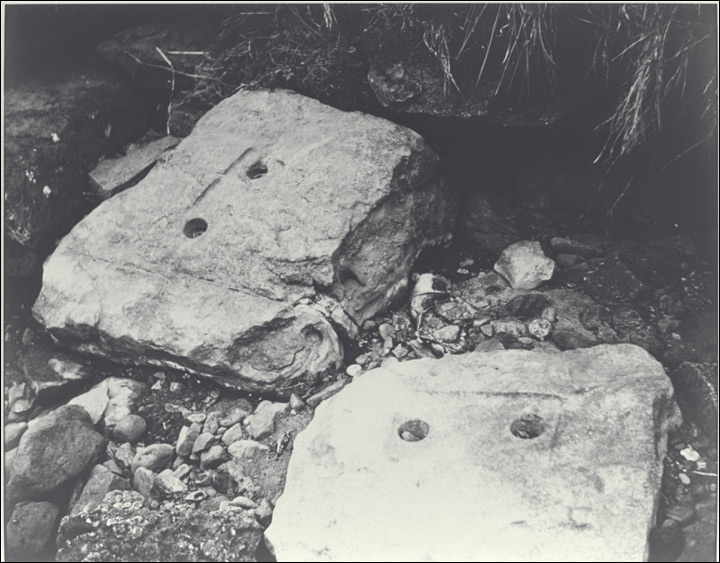 Photographs of original stone sleeper blocks of the Glasgow, Paisley, Kilmarnock & Ayr Railway, taken at Glengarnock, 1981 |
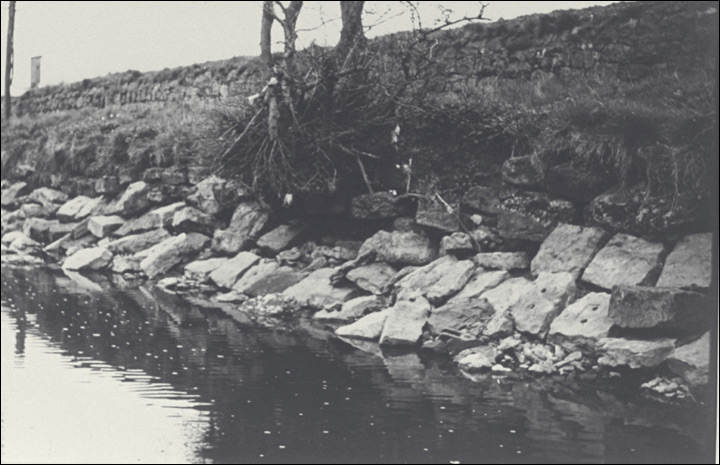 Given the number that must have been made, it is surprising that there are not as many to be seen on the Dundee/Newtyle tracks as are in this photo (also of the Glengarnock railway). |
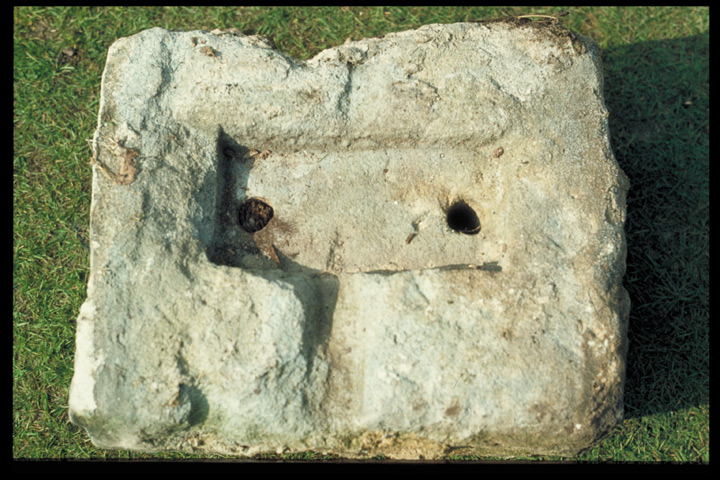 A stone sleeper block from the Monkland & Kirkintilloch Railway removed from a wall at Whitegates in 1980 |
NEXT
Please feel free to contact me by e-mail at elliottsimpson@hotmail.com
June 2019




